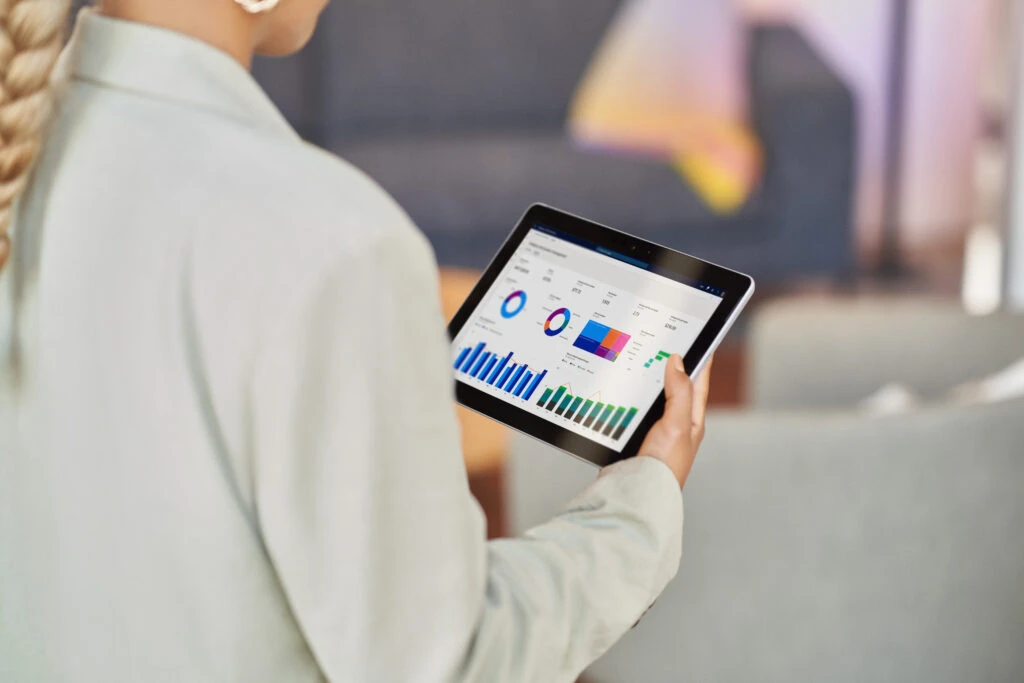
How to bridge physical and digital retail with a connected commerce platform
One of the great perks of my role is getting to speak to some of the biggest retailers in the UK about how their partnership with Microsoft can help shape the future of retail.

I was speaking with one of our customers recently about the technology they use in store. Like many others, this retailer was keen to explore how new technologies could improve the in-store shopping experience. With the unstoppable rise of online shopping, they could see they needed to respond with a similarly slick and seamless experience in their bricks-and-mortar stores.
But they had one comment that stood out to me: The technology had to be invisible to the end customer.
That makes perfect sense. Nobody wants technology to add unnecessary friction to their shopping experience. And retailers don’t want tech to detract from the products they’re selling. Technology should be like a swan on water. Elegance and grace on top, while underneath the legs are kicking because the backend systems are connected, working together in perfect harmony.
That’s really the goal of connected commerce. To enable that swan-on-water capability for retailers. One where the backend is so well connected that it allows employees and processes to solve customer needs whenever and wherever they arise.
Here I want to talk about the unique opportunity that a connected commerce platform presents to UK retailers right now. I also want to share what they can do to start tapping into a more connected offering for consumers.
An industry responding to changing consumer behaviour

Retail is at an interesting moment in the UK. We’ve hit penetration levels of eCommerce that were first forecasted for 10 years from now. That’s all down to the number of retailers scrambling to establish an online presence to keep their businesses alive.
Online sales grew by a staggering 19 percent globally in 2020. Across Europe, four in ten consumers indicated that they’d purchased something online which they would’ve previously purchased in store.
But the part that’s really interesting is that whilst over 70 percent of purchase journeys start online, people are still going in-store for latter parts of that journey. They might be making the final purchase in-store. Or they want to go and check the quality or the customisation or a product. Sometimes they just want to speak to a person. There’s an experiential, even ceremonial role that is emerging for the in-person retail space. Consumers still desire this.
It highlights that the shift to online shopping hasn’t been absolute. The online and offline spaces have blurred together into an omnichannel experience. Within that new hybrid space, having a 360-degree view of your customer as they move between channels has become super important.
That’s especially true given the shift we’ve seen in consumer loyalty over the past 18 months. Consumers are more inclined to shop with new brands, potentially because the online world makes it easier to shop around. Therefore, the purchase journey needs to be smooth, seamless, consistent and compelling at every point. Especially if you want to hold onto your customer from their first interaction to the final purchase.
The omnichannel customer journey

All of this points to a clear fact: The consumer journey is no longer linear. Consumers engage with retailers through social media channels, websites, apps, YouTube, online events, or by going in-store and engaging in person. The customer can jump between these different channels as they want. But within this context, it’s important to make sure that the customer’s experience is consistent.
If the customer journey is broken at any point, they start to look at other brands and retailers.
This poses a lot of challenges for those retailers whose systems are disparate and siloed. If a customer is unable to get insights into an order they placed, make an amendment, or return a product because they ordered it through a different channel, it really damages that customer’s experience, and the retailer’s reputation.
It is vitally important to be able to link those systems and build a connected commerce platform. By empowering employees across all the different touchpoints of a customer journey with relevant – and accurate – information, they can uphold the brand’s reputation and mission. As a result, they will be able to deliver that strong customer experience.
Customer service agents need to be able to see the lifetime value of customers they interact with. To know if they’re a member of a loyalty scheme, what they’ve purchased in the past, if they’ve had challenges with previous products. Then they need to be able to get insight into the supply chain and operations side of the business, to see what’s happening with specific orders.
That agent could be in-store, online, on the phone or answering a message on a social media channel. But wherever they are, retailers need to make sure that they have consistent access to the profiles of customers, and insights into the operational performance of the retailer. Thus, they can make sure the customer journey is consistent and seamless at every point.
How to approach the shifting mechanisms of commerce
Commerce for me is any business operation that will engage with the customer across any part of the shopping experience. It’s not just the purchase, it’s not just visiting the store or the online website.
Getting a 360-degree view of your consumers means being able to answer questions that touch all parts of your organisation. From the first point on the supply chain through the whole journey of that product arriving with a consumer. And finally, to the consumer’s habits after purchase.
Connected commerce is about trying to unify those processes and insights on a common connected data platform. One that spans the physical and digital, providing insights into operations, business performance, and a customer-specific level of reporting.

To achieve that, we need a unified, end-to-end platform to help digitise the retail journey. Gone are the days of distinguishing between ‘front office’ operations relating to things like sales, marketing and customer service, and ‘back office’ operations like supply chain, finance and HR. These things are all blurring together, they’re all connected. They’re all part of the same puzzle.
My message to retailers is to be imaginative about what the future of retail looks like for your organisation. Prioritise your brand before the tech. How do you want your brand message to be upheld as you adapt your in-store experience and your online presence? What does the customer journey look like when upholding that ethos? What is the culture you want to build around the strength of your brand?
Define the business issues you want to solve. Then, make the technology work to that. Don’t go in with a siloed, disparate view of the system that you need. Instead, go in with a checklist of wishes that you want to achieve for your organisation. Then figure out the building blocks that you need in place to make it a reality.
That’s the beauty of the Microsoft Cloud for Retail. All the solutions are underpinned by those building blocks. If you’re utilising the commerce platform, you’re getting all the benefits of the wider Microsoft platform; Microsoft Azure, our security, our compliance and more. That can help you build your roadmap for the future. A future that’s connected, consistent and on-brand, across every touchpoint, built with the customer at the centre.
Find out more
About the author

Adam works for Microsoft UK in the Dynamics 365 Business Group. He is the business lead for the Dynamics 365 Finance & Operations portfolio of products. This group of solutions has three core use cases to support organisations. They help optimise financial and operating models; they help organisations to build a resilient supply chain and they enable organisations to create a connect commerce platform.
Adam’s responsibility is to be the captain of the ship for the UK business. Taking a left to right view across business performance, long term strategy, market and competitor insights, partner ecosystem, and ultimately owning the plan to meet our customer’s needs.




